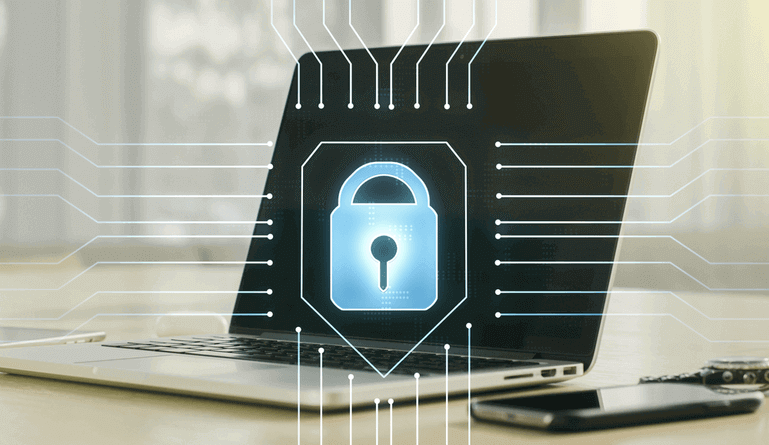Network security is a system of policies and practices that allow the protection of databases and networks from users who have unauthorized access. The importance of it is quite significant especially during this time where the majority of employees part of the corporate world work from home. Throughout this article, we cover the benefits of network security, effective practices, and even the different types that are offered.
7 Reasons Why You Need Network Security
- To protect information against unwanted access
One of the main reasons to establish network security and have the proper network security software in place is to have the ability to protect information against unauthorized access. Because cyber systems are prone to threats and data breaches, it is safe to say that it does a great job of protecting all of your hardware and software from such events.
- To safeguard data from any inappropriate delays in the route followed to deliver it to the destination at the desired time.
Having good data security measures in place and company information protected from inappropriate delays is another purpose of establishing network security. It keeps delivery or deployment time consistent and running efficiently.
- To guard data from any undesired amendment
Aside from unauthorized access and potential threats, the idea of undesired amendment is another reason for network security to take charge. Guarding data against undesired amendments reduces the chances of unwanted authorization from users that aren’t part of the security system.
- To prohibit particular users in the network from sending any type of mail or message in such a way that appears to the receiving party that it’s been sent by a third party.
With network security, sending emails can be protected, especially by particular users. Sending emails through protection hides the identity of senders of the original message.
- To guard hardware such as hard disks, PCs and laptops from the attack of viruses that can damage systems by corrupting or deleting all content stored within it.
Hardware and hard disks are prone to becoming compromised by viruses. That’s why it can benefit PCs and laptops because it can help protect stored content from becoming deleted or damaged.
- To protect PC from software, which if installed, can harm a system as hackers would.
Hackers can do lots of harm to systems and software. Protecting your PC from suspicious software is another way to increase protection against cyber-attacks.
How Network Security Works
The way that network security works is that it helps users or employees follow regulations and policies in order to use specialized software and hardware devices.
Below are three examples.
1.Physical Network Security
Examples of physical network security can be CCTV footage, access controls, barriers, locks, and even security guards. Having this can be seen as the first layer of preventing unauthorized personnel from attacking network components.
2.Technical Network Security
It is a massive layer to protecting valuable information. It’s responsible for protecting stored data within a network and detecting malicious activity that can occur if a browser is misused.
3.Administrative Network Security
These are people who are seen as officials that act as administrators of network security. They oversee the entire structure of network security while managing and monitoring several computer systems that are part of the network.
14 Types of Network Security
Yes, there are different types of network security. It creates structure for the IT department as well as assisting employees to use software and devices correctly. Let’s take a look at the various components that it has to offer.
- Antivirus and Anti-malware Software: A self-explanatory, Antivirus and anti-malware software can help reduce the chances of hardware getting malware and viruses altogether.
- Application Security: The development of action security allows the testing of security features that are part of an application. This determines whether an application can be safe to use or needs an update in order to function better.
- Behavioral Analytics: Behavioral analytics is a great tool that can monitor all types of activity that go on within a network. This helps to detect what activities may be considered suspicious and what content can be deemed as a possible threat. This tool can also look at potential ways to improve the network security itself.
- Data Loss Prevention (DLP): This can come as software or tools that can assist the process of backing up data that’s been lost. It also ensures that specific data does not get access from unauthorized users that could possibly take advantage of said sensitive data.
- Email Security: The securing of emails from getting leaked. This type helps users from receiving unwanted emails as well as prevents emails from getting delivered to the wrong destination.
- Firewalls: Think of this form of network security as a filter. It can allow the good and leave out the bad. It monitors incoming and outcoming traffic of users while browsing the web.
- Mobile Device Security: Security for your mobile device is another essential tool. This protects your phone from malware or hackers from stealing information stored within the system of your mobile device.
- Network Segmentation: Network segmentation is the creation of subnetworks that allow boosts in system performance as well as make room for improvement within a network security system.
- Security Information and Event Management (SIEM): Part of a subsection to computer security, SIEM provides security alert analysis in real-time with the combined functions of security information and event management.
- Virtual Private Network (VPN): Workplaces often use VPNs to protect valuable information belonging to a company. It can shield the browsing activities of users of the public eye and help protect your employees from other users who could be using public WIFI.
- Web Security: Security for a website or web application. This is also known as cybersecurity, which happens to be why it exists. Having web security is vital because it can quickly detect, prevent and respond to threats that can attack a system.
- Wireless Security: The role of wireless security is to protect devices from unauthorized access. An example of wireless security would be WIFI security since it’s common among wireless networks that are prone to threats and open access.
- Endpoint Security: Securing endpoints is another form. Since desktops and laptops are prone to malicious threats, it’s crucial for endpoint security to do its jobs by blocking attacks before they completely take over an end-user’s device.
- Network Access Control (NAC): Network Access Control, or NAC, combines endpoint security and system authentications together with the enforcement of network security. This helps enforce policies on secure network devices for users.
5 Benefits to Network Security
- It protects your data
The number one priority with it is to protect stored data within a system. Data can consist of valuable information. In essence, this is where network security comes in and does its best to protect data from the wrong hands.
- It prevents cyber attacks
Not only does it prevent cyber-attacks, but it can allow the filtering of unwanted traffic as well as protection from viruses with antivirus protection software.
- You receive levels of access
Having a number of access to different levels is another perk. This allows you to oversee the entire system and help detect viruses and other threats that can compromise software and data.
- Gain central control
Gaining network security also means that you have central control of security. This manages the overall flow control of a system, which can be of help in detecting all kinds of security attacks that are bound to occur.
- Receive centralized updates
Receiving centralized patch updates is another benefit to having network security. Having notification about patch management being up to date is an example of effective network security practices. Centralized updates can also reduce time and money spent.
4 Challenges of Network Security
- Setups can be costly
Yes, it’s true. Setting up network security comes with a price. Depending on how much you want to invest in, the costs of it can pile up. But at the end of the day, you get what you paid for.
- They can be time consuming
Aside from setups, it takes lots of work. It can be time-consuming and can take forever to establish and make systems official to use.
- It requires skilled staff
Not a lot of people know how to work around network security. This can lead to limited staff only knowing systems and software. Because of this issue, it can be left unreliable.
- Administration can be careless
Administration in charge of network security can also lead to setbacks. When administration can be careless, it can lead to neglecting the network security against hardware and software. In the long run, this can lead to problems if not regulated appropriately by administering officials.
9 Ways to Make Your Systems and Network Safe
- Set up strong passwords: The best practice to keep your systems and network safe is to set up a secure password. Whether it’s eight characters or more, the types of passwords to create should be strong enough to protect all your information. Not to forget, create a password that can be memorable to use.
- Establish a firewall: This type of network security device protects monitors from incoming and outgoing traffic. It also helps to prevent confidential information from getting leaked out.
- Install Antivirus Protection: Antivirus protection is another effective way to keep your system and network safe. This software will protect you from viruses and other malware threats that could infect a system.
- Constantly Update your System: Keeping your systems up to date is another practice. Because attacks tend to happen to outdated software and systems, it’s best to protect yourself by having your network updated to protect yourself from potential attacks.
- Guard Laptops and Mobile Phones: Guarding your laptops and phones against theft or hacking is another way to upgrade your network security. Whether it’s physical or through a system, it’s crucial to never leave valuable electronic devices out of sight. Install security software and set up two-factor authentication processes to prevent this.
- Allow On-time Backups: On-time backups are part of keeping systems updated. Allowing automatic timely backups will fasten the process of protecting your network security. It’s pretty quick and doesn’t take a lot of work to perform.
- Smart Surfing on the Web: Everybody surfs on the web. But what’s a better solution is to surf smartly. Smartly surfing the web is another solution to protecting your system and network. Consider virtual private networks, or VPNs, which can help with browsing and help protect you from encountering malware and other threats that could pop up on your screen.
- Secure Configuration: Secure misconfigurations are reasons that hackers can get into systems since common gaps can exploit information. With secure configuration, installing devices and network security can easily be kept in order while reducing the chances of threatening cyber activities.
- Allow removable media control: Allowing control of removable media can reduce the chances of encountering network breaches. Once media connects to devices containing personal information, it will be easy for attackers to access, causing cyber vulnerabilities.
| Network Security | Cyber Security |
|---|---|
| Network security is a subset of cybersecurity | Cybersecurity is a subset of information security |
| Processes, policies and practices that detect and monitor unauthorized access | Protection of computer systems and networks from disclosing information, theft or hardware damage |
| Network security features IDs, passwords, firewalls, encryptions and internet access | Cybersecurity includes network protection, up-to-date information and applications |
| It revolves around protecting the organization’s infrastructure | Cybersecurity revolves around professionals that can protect, detect and recover a network or system |
Final Thoughts
Network security is essential for any IT organization. It’s the key to protecting data and other confidential information stored within a database. As an extension to data security, it prevents unauthorized users from gaining access and filters out potential threats that can cause detrimental effects.
Overall, when establishing, it’s best that users create secure and stable passwords for accounts, use private networks like VPNs, and never let electronic valuables out of sight. Aside from effective network security practices, it’s important to remember that there are drawbacks such as costs for setups and careless administrations that could neglect the structure of it. In the end, there are more positives than negatives to focus on when it comes to network security.






